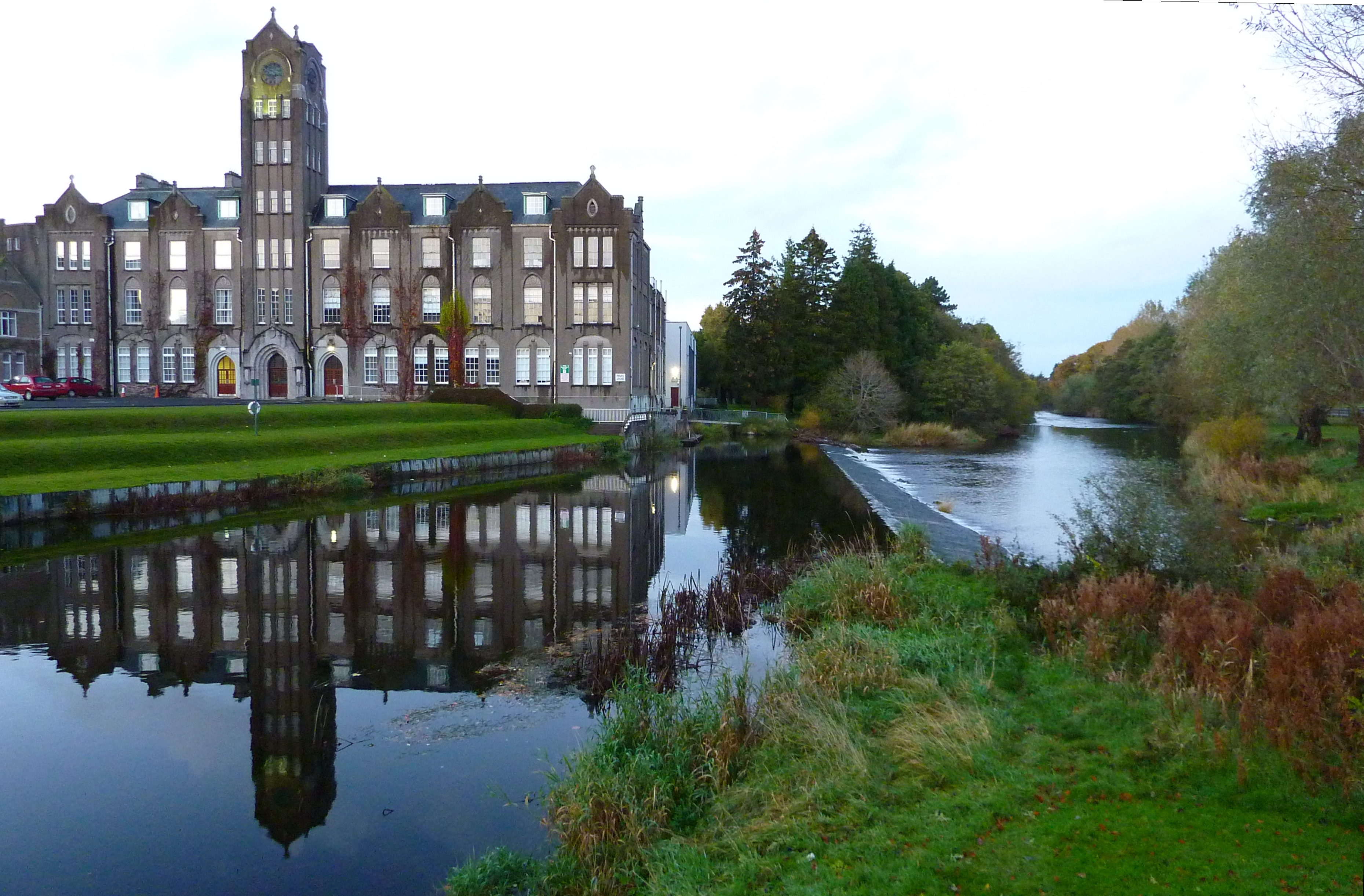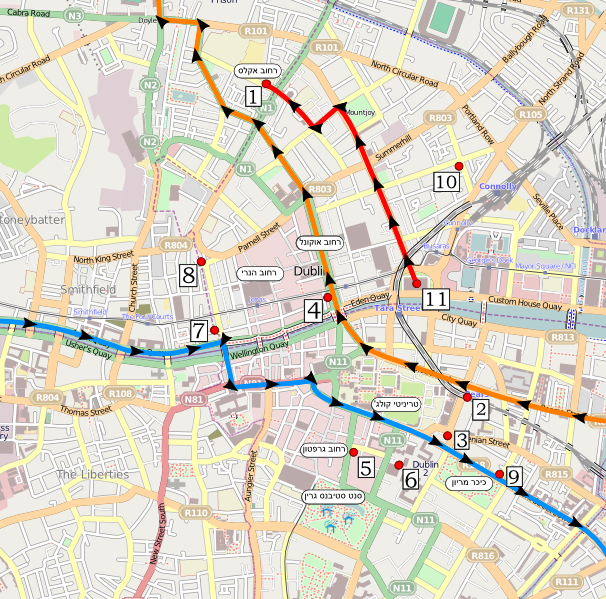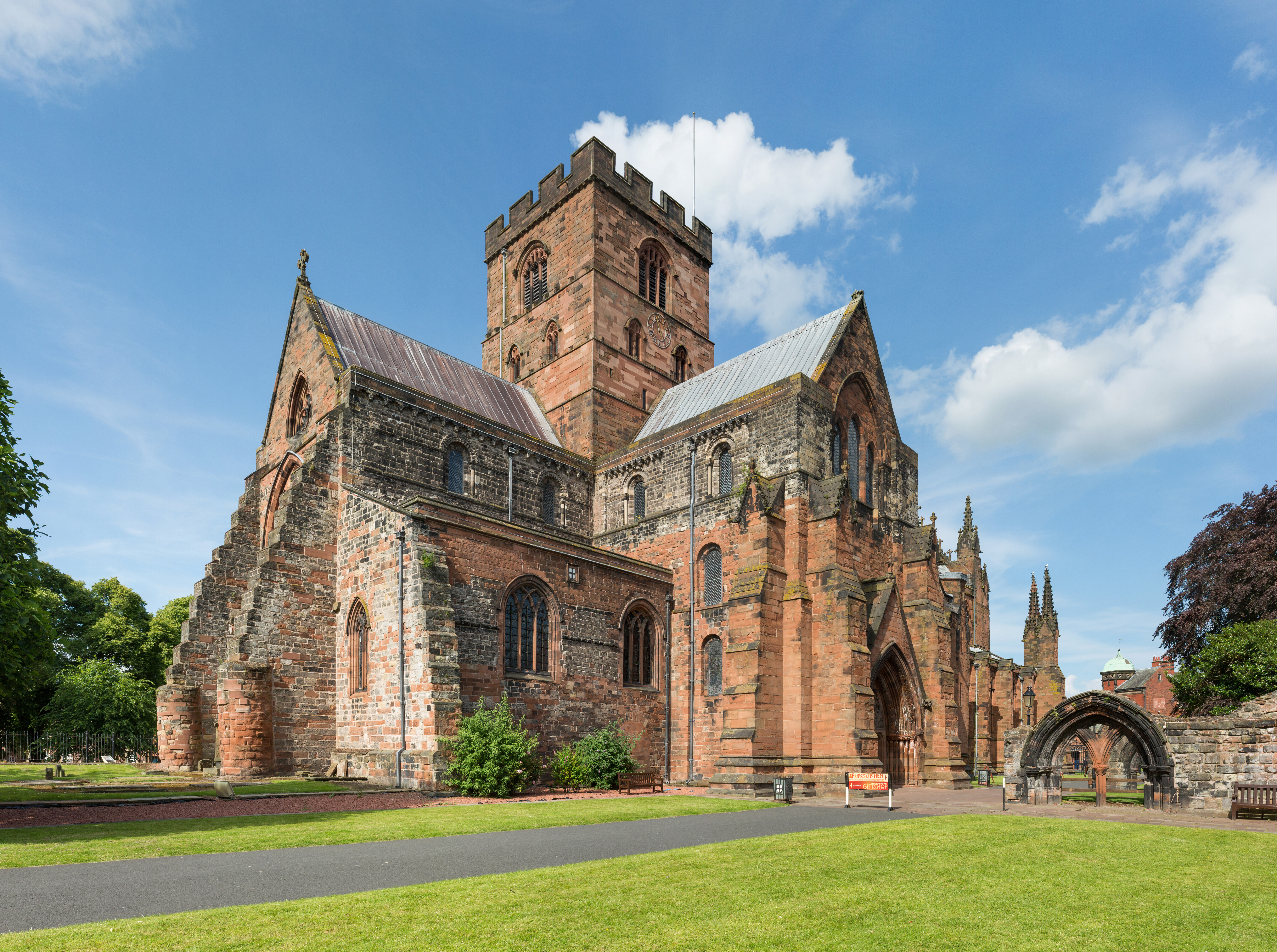|
O'Connell Bridge
O'Connell Bridge () is a road bridge spanning the River Liffey in Dublin, Ireland, which joins O'Connell Street to D'Olier Street, Westmoreland Street and the Dublin quays, south quays. History The original bridge (named ''Carlisle Bridge'' for the then Lord Lieutenant of Ireland – Frederick Howard, 5th Earl of Carlisle) was designed by James Gandon, and built between 1791 and 1794. Originally humped, and narrower, ''Carlisle bridge'' was a symmetrical, three semicircular arch structure constructed in granite with a Portland stone balustrade and obelisks on each of the four corners. A keystone head at the apex of the central span symbolises the River Liffey, corresponding to the heads on the Custom House (also designed by James Gandon) which personify the other great rivers of Ireland. Since 1860, (following similar work on ''Essex Bridge'' – now Grattan Bridge), to improve the streetscape and relieve traffic congestion on the bridge, it was intended to widen Carlisle B ... [...More Info...] [...Related Items...] OR: [Wikipedia] [Google] [Baidu] |
River Liffey
The River Liffey ( Irish: ''An Life'', historically ''An Ruirthe(a)ch'') is a river in eastern Ireland that ultimately flows through the centre of Dublin to its mouth within Dublin Bay. Its major tributaries include the River Dodder, the River Poddle and the River Camac. The river supplies much of Dublin's water and supports a range of recreational activities. Name Ptolemy's ''Geography'' (2nd century AD) described a river, perhaps the Liffey, which he labelled Οβοκα (''Oboka''). Ultimately this led to the name of the River Avoca in County Wicklow. The Liffey was previously named ''An Ruirthech'', meaning "fast (or strong) runner". The word ''Liphe'' (or ''Life'') referred originally to the name of the plain through which the river ran, but eventually came to refer to the river itself. The word may derive from the same root as Welsh ''llif'' (flow, stream), namely Proto-Indo-European ''lē̆i-4'', but Gearóid Mac Eoin has more recently proposed that it may derive fr ... [...More Info...] [...Related Items...] OR: [Wikipedia] [Google] [Baidu] |
Grattan Bridge
Grattan Bridge () is a road bridge spanning the River Liffey in Dublin, Ireland, and joining Capel Street to Parliament Street and the south quays. History The first bridge on this site was built by Sir Humphrey Jervis in 1676. It was named as ''Essex Bridge'' to honour Arthur Capell, 1st Earl of Essex, Lord Lieutenant of Ireland. It joined several of Jervis' developments (including Capel Street and Jervis Street) to the opposite side of the river and to Dublin Castle. ''Essex Bridge'' was an arched stone structure with 7 piers, and apparently partly constructed from the ruined masonry of nearby St. Mary’s Abbey on the northside. In 1687 the bridge was damaged by a flood resulting in the loss of a hackney and two horses. The damage to the bridge was only partially repaired. In 1751 the second most northerly pier collapsed and damaged the adjacent arches. Between 1753 and 1755 the bridge was rebuilt by George Semple, to correct flood and other structural damage and as one ... [...More Info...] [...Related Items...] OR: [Wikipedia] [Google] [Baidu] |
Bridges Completed In 1794
A bridge is a structure built to span a physical obstacle (such as a body of water, valley, road, or rail) without blocking the way underneath. It is constructed for the purpose of providing passage over the obstacle, which is usually something that is otherwise difficult or impossible to cross. There are many different designs of bridges, each serving a particular purpose and applicable to different situations. Designs of bridges vary depending on factors such as the function of the bridge, the nature of the terrain where the bridge is constructed and anchored, and the material used to make it, and the funds available to build it. The earliest bridges were likely made with fallen trees and stepping stones. The Neolithic people built boardwalk bridges across marshland. The Arkadiko Bridge (dating from the 13th century BC, in the Peloponnese) is one of the oldest arch bridges still in existence and use. Etymology The ''Oxford English Dictionary'' traces the origin of the wo ... [...More Info...] [...Related Items...] OR: [Wikipedia] [Google] [Baidu] |
Bridges In Dublin (city)
This article lists the bridges and tunnels in Dublin and the Greater Dublin Area in Republic of Ireland, Ireland. The bridges are ordered sequentially upstream, from mouth to source (river or stream), source. For lists that are not in table format, alternative or historical names are in curved brackets (parentheses) and traversing roads or rails are in square brackets. Bridges over the Liffey Bridges over the River Liffey in Greater Dublin, from east to west. Bridges over the River Liffey outside Greater Dublin, from east to west. * ''Sewage treatment works bridge'' * Leixlip Bridge [Leixlip Road] * ''M4 motorway (Republic of Ireland), M4 motorway'' * New Bridge [R404] * Liffey Bridge (Celbridge Bridge) [Dublin Road, Celbridge] * A footbridge immediately to the south of the road bridge in Celbridge * Rock Bridge [footbridge at Celbridge Abbey] * Straffan Bridge * A truss bridge just west of Straffan Bridge * The Bridge at 16 [19th century wrought iron pedestrian suspension b ... [...More Info...] [...Related Items...] OR: [Wikipedia] [Google] [Baidu] |
Arthur Fields (photographer)
Arthur Fields (born Abraham Feldman; 1901–1994) was an Irish street photographer of Ukrainian descent. He took more than 180,000 photographs of pedestrians on the south end of Dublin's O'Connell Bridge, over more than 50 years. Background and career Fields was born into a Ukrainian Jewish family. His family fled antisemitism in Kiev in 1885, and later settled in Dublin. Fields originally ran a sound studio where people could make a recording of their own voice, but later began his photography when he bought a box camera. Fields switched to a Polaroid instant camera later in his career. Field's brother was also a photographer on the bridge. Fields' extensive photographs are recognised as a social record of Dublin from the 1930s to the 1980s, depicting the changing fashions and shopfronts of the city. Nelson's Pillar often featured in Field's photograph until its destruction by Irish republicans in 1966. Fields took an estimated 182,500 photographs of pedestrians on th ... [...More Info...] [...Related Items...] OR: [Wikipedia] [Google] [Baidu] |
Ulysses (novel)
''Ulysses'' is a Literary modernism, modernist novel by Irish literature, Irish writer James Joyce. Parts of it were first serialized in the American journal ''The Little Review'' from March 1918 to December 1920, and the entire work was published in Paris by Sylvia Beach on 2 February 1922, Joyce's 40th birthday. It is considered one of the most important works of modernist literature and has been called "a demonstration and summation of the entire movement." According to Declan Kiberd, "Before Joyce, no writer of fiction had so foregrounded the process of thinking". ''Ulysses'' chronicles the appointments and encounters of the itinerant Leopold Bloom in Dublin in the course of an ordinary day, 16 June 1904. Ulysses is the Latinisation of names, Latinised name of Odysseus, the hero of Homer's epic poem the ''Odyssey'', and the novel establishes a series of parallels between the poem and the novel, with structural correspondences between the characters and experiences of Bloom an ... [...More Info...] [...Related Items...] OR: [Wikipedia] [Google] [Baidu] |
James Joyce
James Augustine Aloysius Joyce (2 February 1882 – 13 January 1941) was an Irish novelist, poet, and literary critic. He contributed to the Modernism, modernist avant-garde movement and is regarded as one of the most influential and important writers of the 20th century. Joyce's novel ''Ulysses (novel), Ulysses'' (1922) is a landmark in which the episodes of Homer's ''Odyssey'' are paralleled in a variety of literary styles, particularly Stream of consciousness (narrative mode), stream of consciousness. Other well-known works are the short-story collection ''Dubliners'' (1914), and the novels ''A Portrait of the Artist as a Young Man'' (1916) and ''Finnegans Wake'' (1939). His other writings include three books of poetry, a play, letters, and occasional journalism. Joyce was born in Dublin into a middle-class family. He attended the Jesuit Clongowes Wood College in County Kildare, then, briefly, the Christian Brothers-run O'Connell School. Despite the chaotic family life impose ... [...More Info...] [...Related Items...] OR: [Wikipedia] [Google] [Baidu] |
The Sniper (story)
''The Sniper'' is a short story written by the Irish writer Liam O'Flaherty. Set during the early weeks of the Irish Civil War, during the Battle of Dublin, it is O'Flaherty's first published work of fiction. It was published in a small London-based socialist weekly, '' The New Leader'' (12 January 1923) while the war that it depicted was still ongoing. The favorable notice that it generated helped to get other works by O'Flaherty published, and started his career. The short story is widely read today in secondary schools of many English-speaking countries because it is easy to read, it is brief and it has a notable surprise ending. Plot There is heavy fighting taking place in Dublin, Ireland Ireland ( ; ga, Éire ; Ulster Scots dialect, Ulster-Scots: ) is an island in the Atlantic Ocean, North Atlantic Ocean, in Northwestern Europe, north-western Europe. It is separated from Great Britain to its east by the North Channel (Grea .... A Republican sniper is sitting o ... [...More Info...] [...Related Items...] OR: [Wikipedia] [Google] [Baidu] |
Liam O'Flaherty
Liam O'Flaherty ( ; 28 August 1896 – 7 September 1984) was an Irish novelist and short-story writer, and one of the foremost socialist writers in the first part of the 20th century, writing about the common people's experience and from their perspective. Liam O'Flaherty served on the Western Front as a soldier in the British army's Irish Guards regiment from 1916 and was badly injured in 1917. After the war, he was a founding member of the Communist Party of Ireland. His brother Tom Maidhc O'Flaherty (also a writer) was also involved in radical politics and their father, Maidhc Ó Flaithearta, was before them. A native Irish-speaker from the Gaeltacht, O'Flaherty wrote almost exclusively in English, except for a play, a notable collection of short stories and some poems in the Irish language. Early years O'Flaherty was born, a son of Maidhc Ó Flaithearta and Maggie Ganley, at Gort na gCapall, Inishmore. Baptised William, he adopted the form 'Liam' in the 1920s. His fami ... [...More Info...] [...Related Items...] OR: [Wikipedia] [Google] [Baidu] |
Carlisle Bridge, Dublin, C
Carlisle ( , ; from xcb, Caer Luel) is a city that lies within the Northern English county of Cumbria, south of the Scottish border at the confluence of the rivers Eden, Caldew and Petteril. It is the administrative centre of the City of Carlisle district which, (along with Cumbria County Council) will be replaced by Cumberland Council in April 2023. The city became an established settlement during the Roman Empire to serve forts on Hadrian's Wall. During the Middle Ages, the city was an important military stronghold due to its proximity to the Kingdom of Scotland. Carlisle Castle, still relatively intact, was built in 1092 by William Rufus, served as a prison for Mary, Queen of Scots in 1568 and now houses the Duke of Lancaster's Regiment and the Border Regiment Museum. In the early 12th century, Henry I allowed a priory to be built. The priory gained cathedral status with a diocese in 1133, the city status rules at the time meant the settlement became a city. From t ... [...More Info...] [...Related Items...] OR: [Wikipedia] [Google] [Baidu] |
Father Pat Noise
The Fr. Pat Noise plaque is a hoax commemorative plaque installed by two brothers on the balustrade of O'Connell Bridge over the River Liffey in Dublin, Ireland. It is about a fictitious Roman Catholic priest named Father Pat Noise. The full text of the plaque reads: The bronze plaque had been professionally sand cast using materials and techniques estimated at a value of about €1,000 ($US) to produce. Only a few foundries in the Dublin area had the equipment and skill necessary to produce such an artefact. Two men who claimed to be the hoaxers said they installed it in 2004, and owned up in May 2006 after the plaque was brought to the attention of Dublin City Council by a journalist for the ''Sunday Tribune''. They provided video footage that appeared to show them installing it in April 2004. They claimed the work was a tribute to their father, and that the name 'Father Pat Noise' is a word play on ''pater noster'', Latin for "our father". The 'HSTI' is also fictitious, ... [...More Info...] [...Related Items...] OR: [Wikipedia] [Google] [Baidu] |
St Stephen's Green
St Stephen's Green () is a garden square and public park located in the city centre of Dublin, Ireland. The current landscape of the park was designed by William Sheppard. It was officially re-opened to the public on Tuesday, 27 July 1880 by Lord Ardilaun. The square is adjacent to one of Dublin's main shopping streets, Grafton Street, and to a shopping centre named after it, while on its surrounding streets are the offices of a number of public bodies as well as a stop on one of Dublin's Luas tram lines. It is often informally called Stephen's Green. At , it is the largest of the parks in Dublin's main Georgian garden squares. Others include nearby Merrion Square and Fitzwilliam Square. The park is rectangular, surrounded by streets that once formed major traffic arteries through Dublin city centre, although traffic management changes implemented in 2004 during the course of the Luas works have greatly reduced the volume of traffic. These four bordering streets are called, ... [...More Info...] [...Related Items...] OR: [Wikipedia] [Google] [Baidu] |






.jpg)